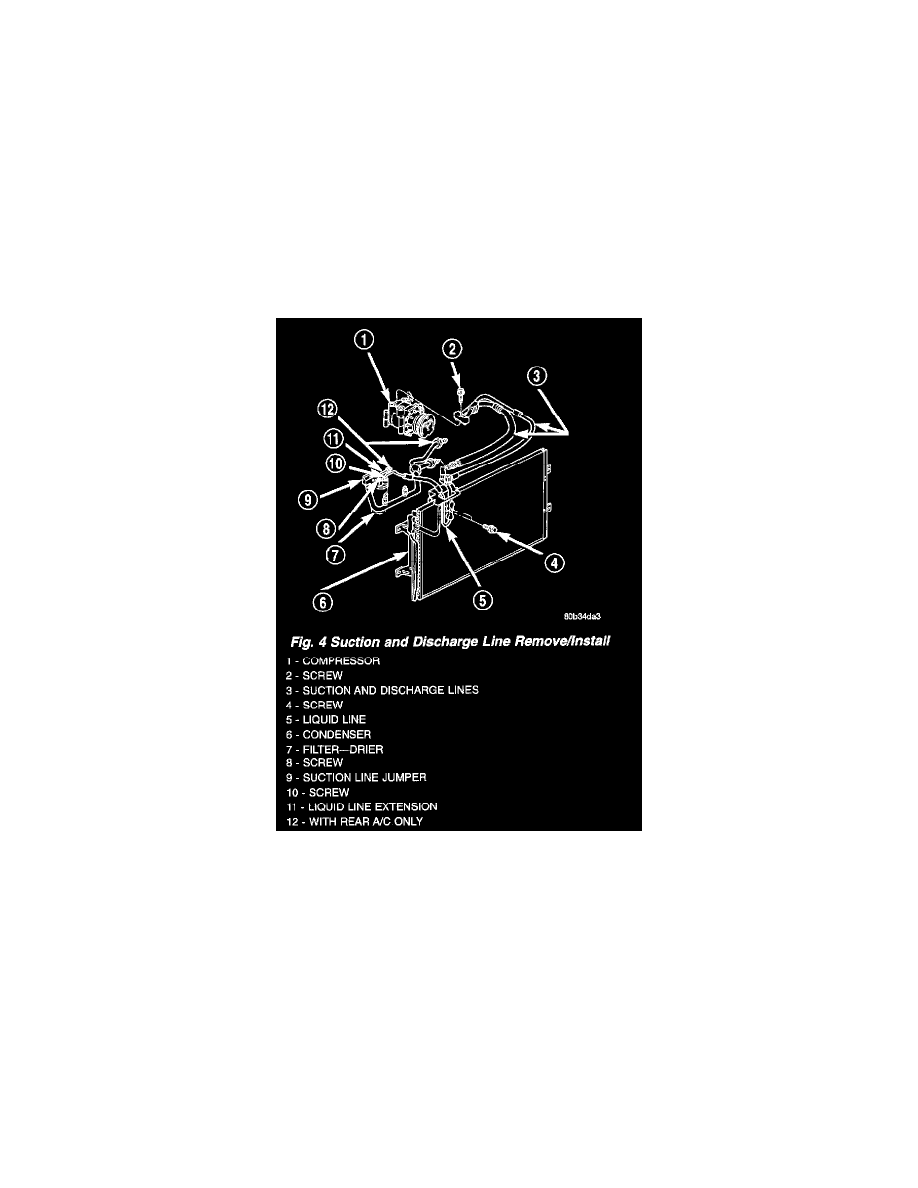RAM 1500 Van V8-5.9L VIN Z LDC (2001)

Hose/Line HVAC: Service and Repair
A/C Discharge Hose/Line Replacement
REMOVAL
Any kinks or sharp bends in the refrigerant plumbing will reduce the capacity of the entire air conditioning system. Kinks and sharp bends reduce the
flow of refrigerant in the system. A good rule for the flexible hose refrigerant lines is to keep the radius of all bends at least ten times the diameter of
the hose. In addition, the flexible hose refrigerant lines should be routed so they are at least 80 millimeters (3 inches) from the exhaust manifold.
High pressures are produced in the refrigerant system when the air conditioning compressor is operating. Extreme care must be exercised to make sure
that each of the refrigerant system connections is pressure-tight and leak free. It is a good practice to inspect all flexible hose refrigerant lines at least
once a year to make sure they are in good condition and properly routed.
1. Disconnect and isolate the battery negative cable.
2. Recover the refrigerant from the refrigerant system.
3. Unplug the wire harness connector from the high pressure cut-off switch.
4. Remove the radiator grille from the vehicle.
Fig. 4 Suction And Discharge Line Remove/Install
5. Remove the screw that secures the block fitting on the discharge line to the block fitting on the inlet of the condenser, and separate the fitting from
the condenser. Install plugs in, or tape over all of the opened refrigerant line fittings.
6. Disconnect the flare nut on the suction line from the threaded fitting on the suction line jumper. Install plugs in, or tape over all of the opened
refrigerant line fittings.
7. Remove the screw that secures the refrigerant line manifold to the compressor. Install plugs in, or tape over all of the opened refrigerant line
fittings.
8. Remove the suction and discharge line assembly from the vehicle.
INSTALLATION
Any kinks or sharp bends in the refrigerant plumbing will reduce the capacity of the entire air conditioning system. Kinks and sharp bends reduce the
flow of refrigerant in the system. A good rule for the flexible hose refrigerant lines is to keep the radius of all bends at least ten times the diameter of
the hose. In addition, the flexible hose refrigerant lines should be routed so they are at least 80 millimeters (3 inches) from the exhaust manifold.
High pressures are produced in the refrigerant system when the air conditioning compressor is operating. Extreme care must be exercised to make sure
that each of the refrigerant system connections is pressure-tight and leak free. It is a good practice to inspect all flexible hose refrigerant lines at least
